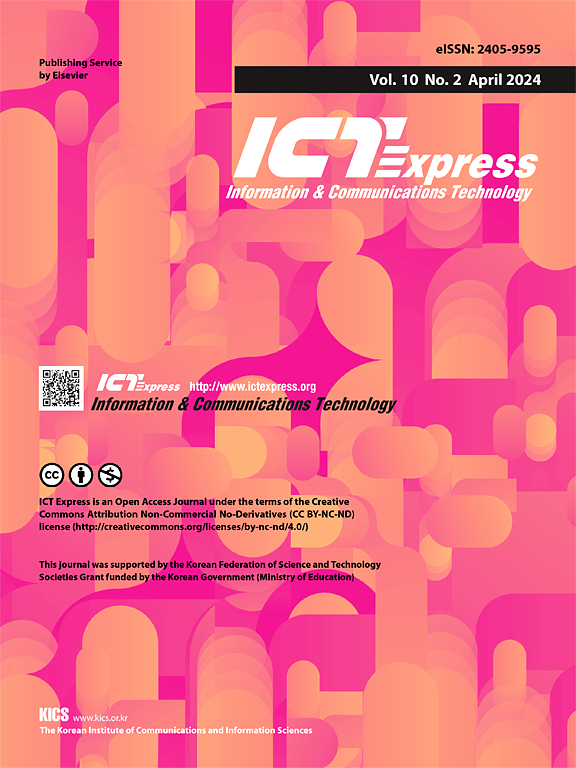Hybrid beamforming with branchwise phase shifters for RIS-Assisted 6G wireless communications
IF 4.2
3区 计算机科学
Q1 COMPUTER SCIENCE, INFORMATION SYSTEMS
引用次数: 0
Abstract
Recently, reconfigurable intelligent surface (RIS) technology has provided new opportunities to rescale the performance metric and boost network coverage for sixth-generation (6G) wireless communications. In RIS-assisted wireless communication systems, traditional analog beamforming requires a huge number of phase shifters, which increases exponential and computational complexity. In order to accomplish computationally efficient hybrid beamforming for 6G communications, we therefore propose a branchwise phase shifters (BPS) architecture of analog beamforming in this paper. To establish the best baseband configuration for wireless 6G communications, we first consider an RIS element and a transmitter antenna branchwise millimeter wideband (B-MW) channel model. Following that, we design a BPS-based analog beamforming architecture using a power splitting technique, which splits the transmit power associated with each RF chain and allows each RF chain to utilize two PS branches. The B-MW channel can easily provide a low-dimensional hybrid beamforming solution with the BPS architecture, which allows easy rescaling of the beamforming gain, thus enhancing the achievable rate. We then present an iterative algorithm with zero-forcing to tackle a joint optimization problem of RIS-assisted hybrid beamforming. Lastly, the beam coverage and achievable rate of the proposed BPS architecture are verified by the simulation results, which outperform the traditional single, double, and combined phase-shifter architecture.
带有分支移相器的混合波束形成,用于ris辅助的6G无线通信
最近,可重构智能表面(RIS)技术为第六代(6G)无线通信提供了重新调整性能指标和提高网络覆盖范围的新机会。在ris辅助无线通信系统中,传统的模拟波束形成需要大量的移相器,这增加了指数和计算复杂性。为了实现6G通信中计算效率高的混合波束形成,本文提出了一种分支移相器(BPS)模拟波束形成架构。为了建立无线6G通信的最佳基带配置,我们首先考虑RIS元件和发射器天线分支毫米宽带(B-MW)信道模型。随后,我们使用功率分割技术设计了基于bps的模拟波束形成架构,该架构将与每个RF链相关的发射功率分割,并允许每个RF链利用两个PS分支。B-MW信道可以很容易地提供具有BPS架构的低维混合波束形成解决方案,可以轻松地重新缩放波束形成增益,从而提高可实现的速率。然后,我们提出了一种零强迫的迭代算法来解决ris辅助混合波束形成的联合优化问题。最后,仿真结果验证了所提BPS结构的波束覆盖率和可达速率,优于传统的单移相器、双移相器和组合移相器结构。
本文章由计算机程序翻译,如有差异,请以英文原文为准。
求助全文
约1分钟内获得全文
求助全文
来源期刊

ICT Express
Multiple-
CiteScore
10.20
自引率
1.90%
发文量
167
审稿时长
35 weeks
期刊介绍:
The ICT Express journal published by the Korean Institute of Communications and Information Sciences (KICS) is an international, peer-reviewed research publication covering all aspects of information and communication technology. The journal aims to publish research that helps advance the theoretical and practical understanding of ICT convergence, platform technologies, communication networks, and device technologies. The technology advancement in information and communication technology (ICT) sector enables portable devices to be always connected while supporting high data rate, resulting in the recent popularity of smartphones that have a considerable impact in economic and social development.
 求助内容:
求助内容: 应助结果提醒方式:
应助结果提醒方式:


